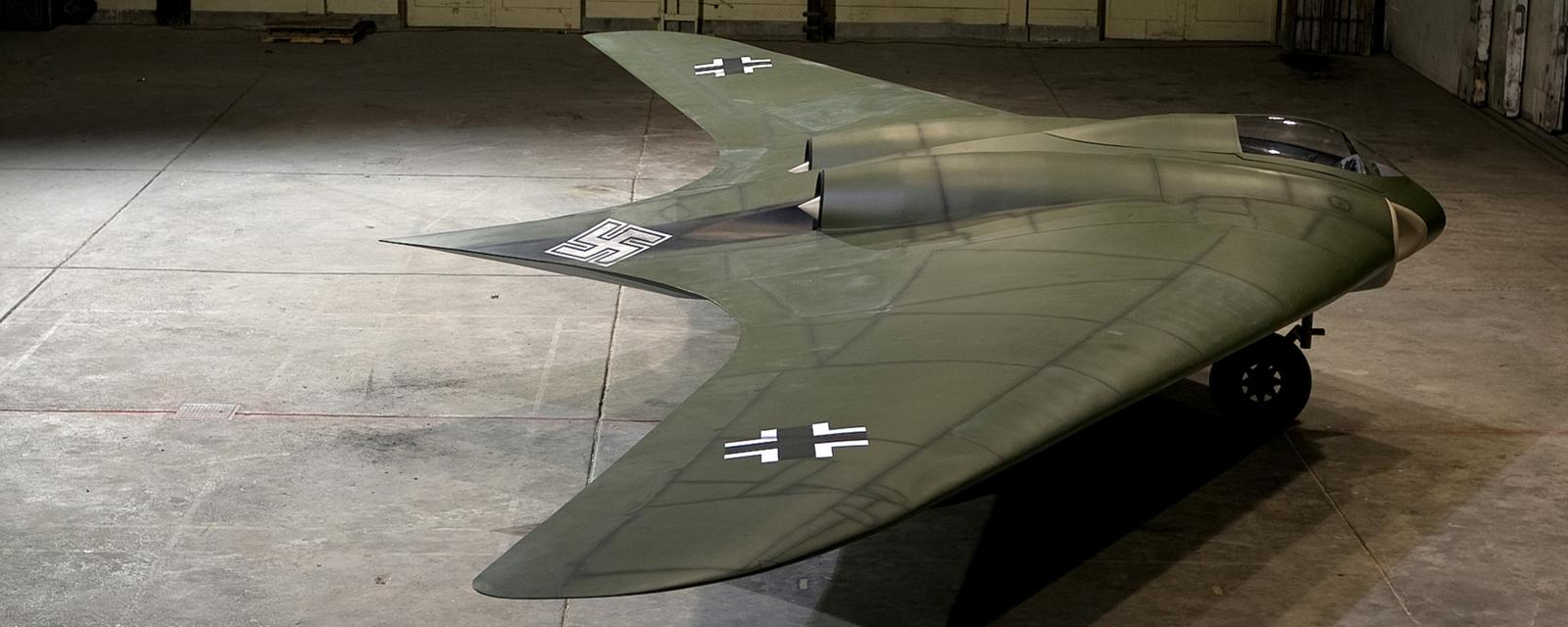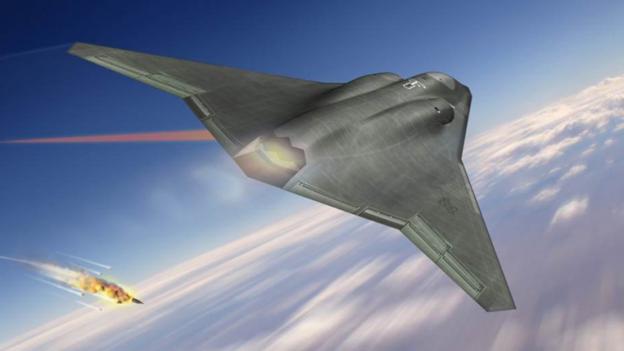by STEPHEN DOWLING
 In the last months of World War Two, Nazi Germany tested an experimental fighter more spaceship than aircraft. Only now are we realising how inspired it was. BBC Future looks at the Horten Ho 229, one of aviation’s most futuristic designs.
In the last months of World War Two, Nazi Germany tested an experimental fighter more spaceship than aircraft. Only now are we realising how inspired it was. BBC Future looks at the Horten Ho 229, one of aviation’s most futuristic designs.
 Northrop Grumman’s concept for a flying wing fighter has similarities to the Hortens’ innovative design IMAGE/ Northrop Grumman
Northrop Grumman’s concept for a flying wing fighter has similarities to the Hortens’ innovative design IMAGE/ Northrop Grumman
In December, US aircraft maker Northrop Grumman unveiled a revolutionary design for a future fighter aircraft that could, theoretically, fly over the war zones of the coming century.
Their concept looks more like a flying saucer than a fighter plane – it is what aviation experts call a ‘flying wing’, a design which ditches the traditional tail fin at the back. This design helps reduce the aircraft’s size, and creates a smoother shape – one less likely to bounce back radar signals being sent out to detect it.
The ‘flying wing’ design isn’t an everyday sight in our skies because it’s incredibly hard to make work. By getting rid of the tail – which helps keep the aircraft stable and stops it ‘yawing’ from side to side – the aircraft is a lot harder to control. So why would you try to build something that was inherently difficult to fly?
If you can make a flying wing work, it has several benefits. The resulting plane becomes difficult to spot on radar, partly because it has no tail fins that will bounce back radar waves. The smooth shape also means the aircraft has as little drag as possible, which means it can be lighter and more fuel-efficient, and possibly fly faster than a more conventionally shaped aircraft using the same engine.
All of that looks good on paper – but getting it to work in the real world is a lot more difficult. Flying wings have proved to be a headache for aircraft designers stretching back almost to the time of the Wright Brothers. All of which makes the achievements of the German Horten brothers so impressive.
The Hortens – Walter and Reimar – began designing aircraft in the early 1930s, while Germany was officially banned from having an air force under the constraints of the Treaty of Versailles following World War One. The brothers had joined sporting air clubs, set up as a way to get around such restrictions, and which were a foundation for what could become Nazi Germany’s air force, the Luftwaffe.
Many of the amateur aviators who would later become Luftwaffe pilots cut their teeth flying various gliders and ‘sailplanes’, unpowered aircraft which taught them the rudiments of flying. The Horten brothers combined flying with designing aircraft as well – turning the family’s lounge-room into a workshop to work on new designs, according to the aviation website Aerostories.
New fighter
The pair followed some of the esoteric ideas of unconventional aircraft designer Frederich Lippisch, who was a pioneer of delta-wing aircraft designs; another radical form that came into its own once jet engines had been developed. The Hortens developed their flying wing approach with increasingly effective results, ending in their Horten Ho IV glider, in which the pilot lay prone in the aircraft, which meant the cockpit canopy didn’t jut so far out from the fuselage and create aerodynamic drag.
BBC for more
